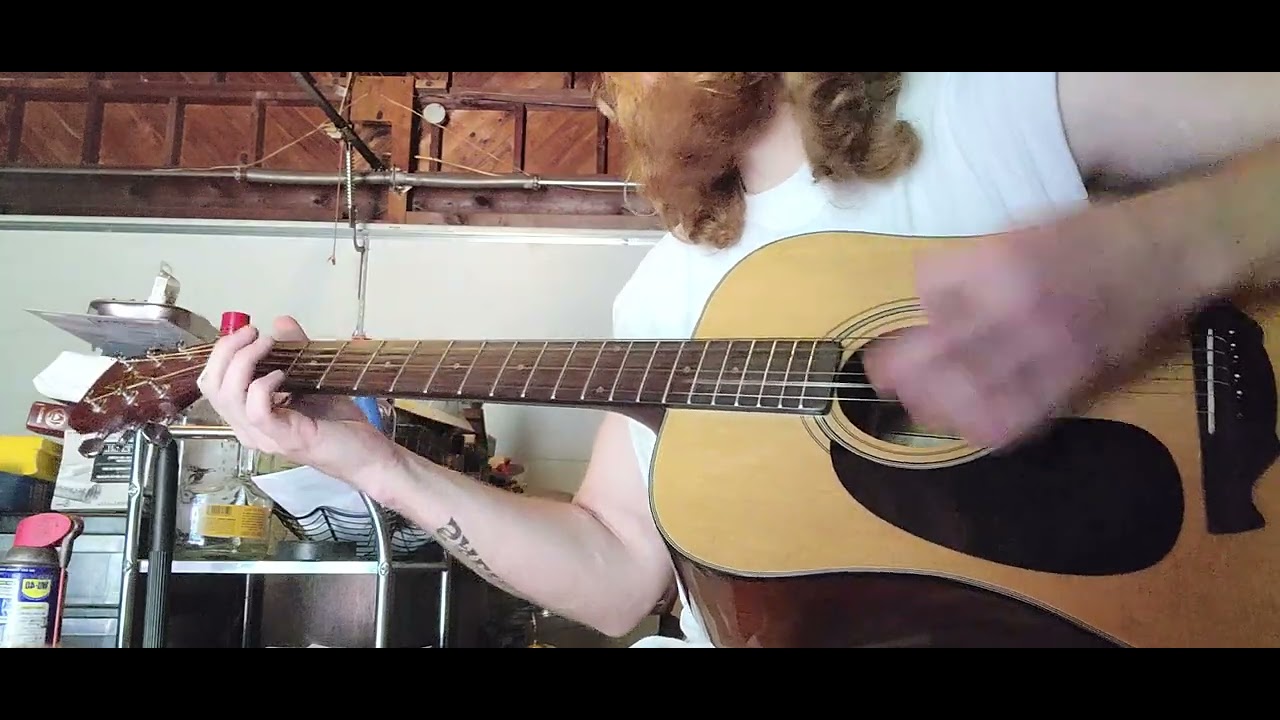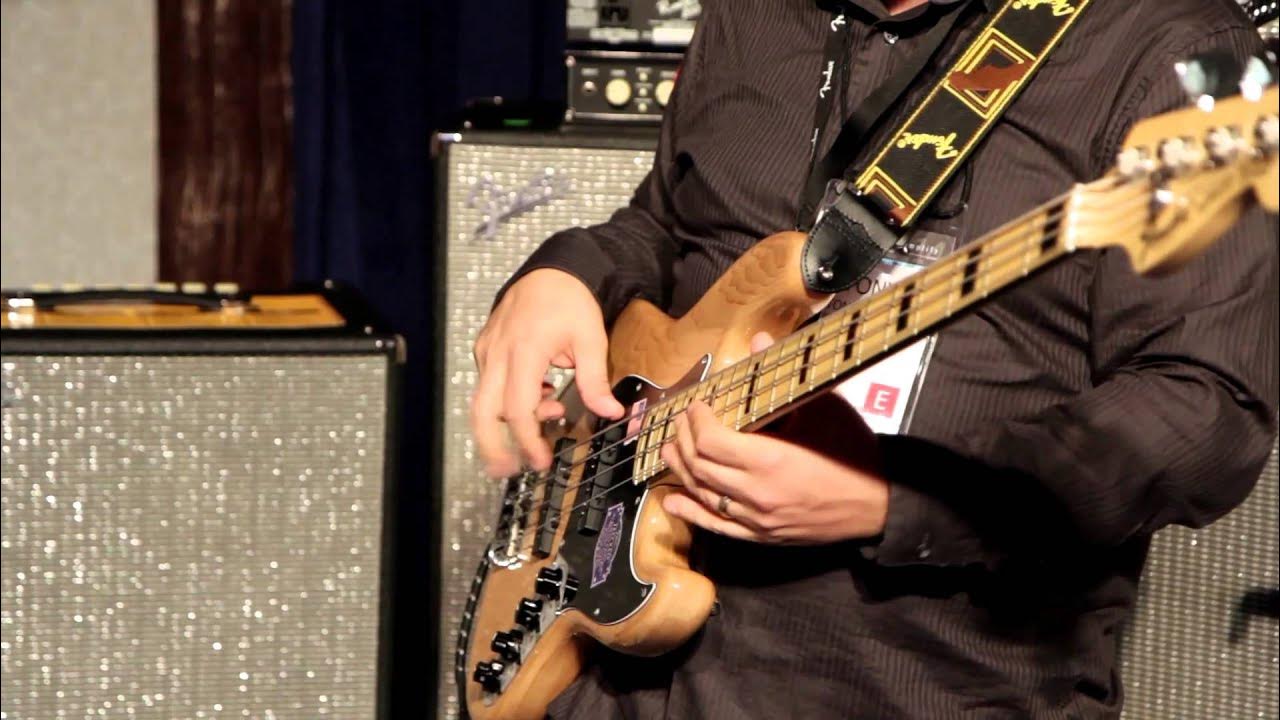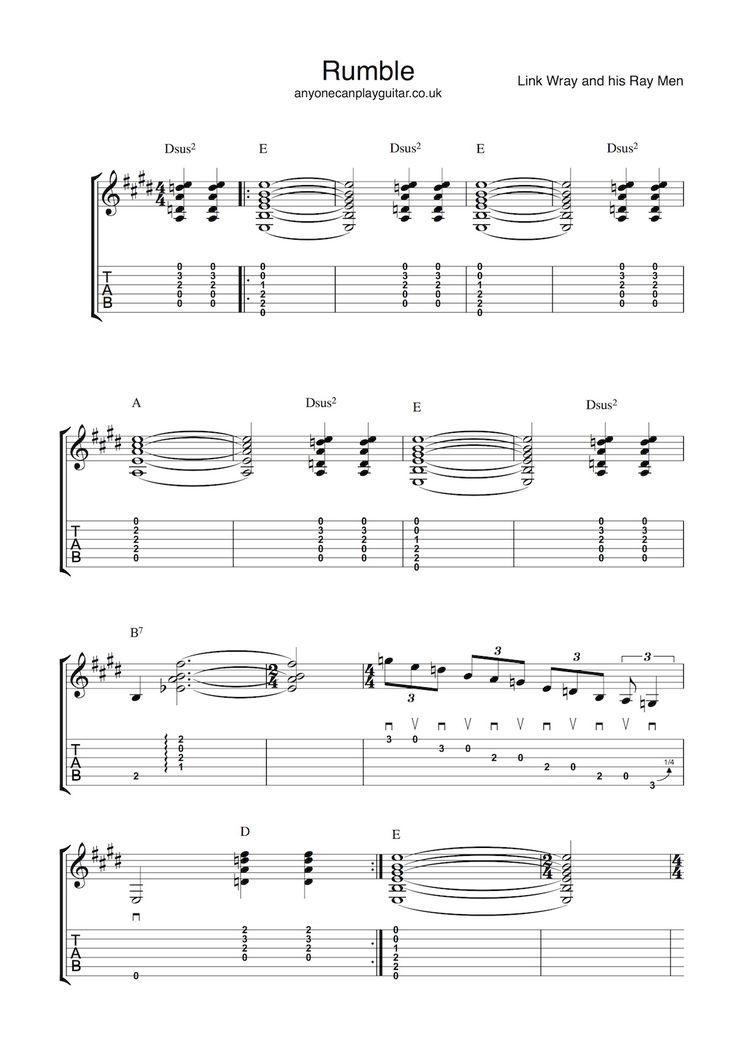Hey there, fellow guitar enthusiasts! If you've ever wanted to add a bit of flair to your playing, mastering "Rumble" is a fantastic place to start. This technique not only gives your performance a unique sound but also showcases your skills as a guitarist. In this post, we'll dive into what Rumble is all about and how you can incorporate it into your playing to leave your audience in awe. Ready to unleash some impressive riffs? Let’s get started!
Essential Techniques for Playing Rumble

To truly capture the essence of Rumble, you’ll want to focus on a few key techniques. Let’s break them down:
- Understanding the Rhythm: Rumble relies heavily on the rhythm. Start by listening to tracks that utilize this technique, like “Rumble” by Link Wray. Notice how the notes are played with a percussive quality. Try tapping your foot or clapping along to internalize the beat.
- Using Palm Muting: One of the fundamental components of Rumble is palm muting. Place the edge of your palm lightly on the strings near the bridge while you strum. This dampens the sound and creates that characteristic thump. Practice playing open chords while palm muting to get comfortable with the feel.
- Incorporating Slides and Bends: A great way to add character to your Rumble is through slides and bends. For example, slide into a note instead of picking it directly. This smooth transition can create a haunting sound that's perfect for Rumble.
- Utilizing Power Chords: Power chords add depth and weight to your sound. They are usually played as two or three notes. For Rumble, focus on the lower strings to achieve that heavy, resonant sound. Try playing a simple progression with power chords and apply palm muting to make it pop.
Let’s put it all together. Start slow; play a simple riff using palm muting, then incorporate slides and bends. Gradually build up speed but maintain clarity. You could even record yourself to hear how your Rumble evolves. Remember, practice makes perfect!
Incorporating these techniques into your practice routine will not only enhance your Rumble skills but also improve your overall guitar playing. So, grab your guitar, find your groove, and let’s make some music!
Also Read This: A Step-by-Step Guide to Joining the Rumble Partner Program
3. Step-by-Step Guide to Mastering Rumble

Alright, let’s dive into the nitty-gritty of mastering the rumble technique on your guitar! This technique can add a whole new layer of depth and intensity to your playing. Follow these steps, and you’ll be rumbling like a pro in no time!
Step 1: Understand the Basics
Before you start, it’s essential to grasp what rumble means in the context of guitar playing. Rumble usually refers to a rhythmic, low-frequency sound that can mimic the growl of a bass or the thunder of drums. It often involves palm muting and specific picking techniques.
Step 2: Get Your Gear Ready
- Choose the right guitar: A solid-body electric guitar works best for this technique.
- Pick your amp settings: Dial in a warmer tone with more bass to enhance the rumble effect.
- Consider your effects: A distortion or overdrive pedal can help achieve that gritty sound.
Step 3: Palm Muting Practice
Start with basic palm muting. Place the edge of your picking hand lightly on the strings near the bridge and strum. Experiment with different pressures to find the sweet spot where the sound is muted yet still audible. Here’s a simple exercise:
e|---0-------0-------0-------0---| B|---0-------0-------0-------0---| G|---0-------0-------0-------0---| D|---0-------0-------0-------0---| A|---0-------0-------0-------0---| E|---0-------0-------0-------0---|
Try this exercise while muting the strings with your palm. You’ll start to feel the rumble vibe. Keep it steady and in time!
Step 4: Incorporate Rhythmic Patterns
Now that you have the basics down, practice incorporating rhythm. A common pattern is playing eighth notes followed by palm-muted quarter notes. For example:
e|---0-0---0-0---0-0---0-0---| B|---0-0---0-0---0-0---0-0---| G|---0-0---0-0---0-0---0-0---| D|---0---0---5-5---5-5---4---| A|---0-------0-------0-------| E|---0-------0-------0-------|
Practice this until you can play it fluidly. Remember to keep your hand relaxed and your rhythm consistent.
Step 5: Add Variations
Once you’re comfortable with the basic patterns, it’s time to spice things up! Incorporate slides, hammer-ons, and pull-offs. This will enhance the rumble effect and keep your performance dynamic. Experiment with different sequences and find what feels right for you.
Finally, practice regularly. The more you play, the more natural this technique will become. Record yourself and listen back to pinpoint areas for improvement. With patience and practice, you’ll soon be mastering the rumble technique!
Also Read This: Does Rumble Pay You for Videos? What You Can Expect as a Content Creator
4. Common Mistakes to Avoid When Playing Rumble

As with any guitar technique, there are pitfalls that can hold you back from achieving that perfect rumble. Let’s break down some common mistakes and how to avoid them.
Mistake 1: Over-Muting
A frequent issue is over-muting the strings, which can lead to a dull sound. While palm muting is essential, too much pressure will result in a lifeless tone. Always find the right balance where the notes ring out with a bit of warmth.
Mistake 2: Neglecting Rhythm
Rumble isn’t just about technique; it’s also about timing. Failing to keep a steady rhythm can make your playing sound disjointed. Use a metronome during practice to develop your timing and ensure you’re hitting those notes precisely.
Mistake 3: Ignoring Dynamics
Rumble should have a dynamic quality. Playing everything at the same volume can make your music feel flat. Experiment with varying your strumming intensity – lighter strokes can create a softer rumble, while stronger strokes can enhance power.
Mistake 4: Skipping the Warm-Up
Jumping straight into rumble without warming up can lead to poor execution and potential strain. Before diving into your rumble exercises, spend a few minutes playing scales or simple chord progressions to get your fingers loosened up.
Mistake 5: Not Listening to Influencers
Finally, one mistake many players make is not listening to other guitarists who excel at rumble. Artists like John Mayer or Jack White use rumble effectively. Listen closely to their recordings and watch live performances to pick up on their techniques and styles.
By avoiding these common mistakes and focusing on your technique, you’ll be well on your way to delivering an impressive rumble performance. Keep practicing, and enjoy the journey!
Also Read This: What Time Does WWE Royal Rumble Start? A Quick Look at the Event Schedule
5. Tips for Enhancing Your Performance
When it comes to delivering an impressive performance with the rumble technique on guitar, there are several key tips that can help you stand out. Here are some practical suggestions to elevate your playing:
- Connect Emotionally with Your Music: Music is all about expressing feelings. Before your performance, take a moment to connect with the emotions behind the song. Whether it's joy, sadness, or nostalgia, channeling these emotions can resonate with your audience.
- Use Dynamics Effectively: Rumble can sound powerful, but varying your dynamics can add depth. Experiment with playing softly in some sections and then building to a louder, more intense rumble. This contrast can create an engaging experience for listeners.
- Engage with Your Audience: Don’t just play; interact! Look up from your guitar and make eye contact with your audience. Smile, and if appropriate, encourage them to clap or sing along. This creates a connection that enhances the overall performance.
- Focus on Timing: Rumble is all about rhythm. Make sure you’re locking in with the beat. Consider practicing with a metronome or jamming with other musicians to improve your timing. Strong timing will give your performance a solid foundation.
- Experiment with Tone: Don’t hesitate to play around with different effects and tones. Using distortion, reverb, or delay can give your rumble a unique flavor. Just make sure it complements your playing style and the song’s mood.
- Stay Relaxed: Nerves can affect your performance. Practice relaxation techniques like deep breathing before stepping on stage. A calm demeanor will help you play more fluidly and confidently.
By incorporating these tips into your practice and performances, you’ll not only improve your rumble technique but also create a memorable experience for yourself and your audience.
6. Practice Routines to Perfect Rumble
To truly master the rumble technique, developing a structured practice routine is essential. Here’s a sample routine that you can adapt to fit your schedule:
| Time | Activity |
|---|---|
| 10 Minutes | Warm-Up: Start with finger exercises and scales. Focus on agility and accuracy to prepare for more complex techniques. |
| 15 Minutes | Rumble Technique Practice: Spend this time focusing on the mechanics of rumble. Break down the movements, ensuring you’re hitting the strings correctly and evenly. |
| 20 Minutes | Song Application: Choose a song that features rumble. Work on applying the technique in context, paying attention to timing and dynamics. |
| 10 Minutes | Improvisation: Allow yourself to experiment. Use the rumble technique in spontaneous playing. This helps you think on your feet and develop your personal style. |
| 5 Minutes | Cool Down: End your session with gentle strumming or simple melodies. This helps relax your fingers and solidify what you’ve learned. |
By sticking to this routine several times a week, you’ll gradually see improvement in your rumble technique. Remember, consistency is key. Over time, you’ll develop not only technical skill but also confidence in your ability to perform.
Incorporate these elements into your daily practice, and you’ll be well on your way to mastering rumble on guitar, ready to impress your audience!
 admin
admin








